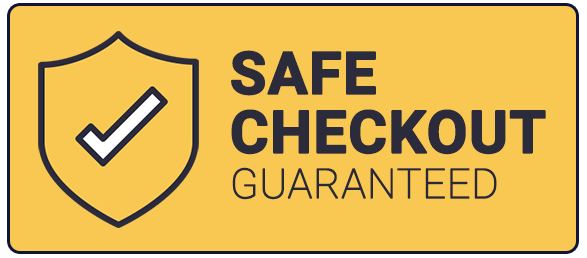|
During times like these in which it is important to protect oneself from COVID while taking every precaution necessary to stop the spread, it is also important to be ready to provide care to patients experiencing other health emergencies. Over 350,000 out-of-hospital cardiac arrests occur each year. Performing CPR is a viable method used to give patients the best possible chance of survival. As we experience this pandemic, hands-only CPR is a good option to keep both the patient and the rescuer as safe as possible. Getting CPR certified and learning how to perform hands-only CPR is an excellent way to help your community during these difficult times. With knowledge of CPR and First Aid you will learn life-saving skills and gain the confidence to be able to support those in need during an emergency medical crisis. Is It Safe to Perform CPR During the COVID Crisis?To prevent the transmission of COVID-19 it is important to use social distancing while wearing masks and using sterile gloves. Due to the threatening nature of the disease, it is understandable that many individuals may be hesitant to perform CPR on someone they don't know. However, researchers have acknowledged that there is a low risk of COVID-19 transmission during CPR when the rescuer is wearing a mask. Therefore, yes, you should absolutely perform CPR in the event of a medical emergency, even during the present day COVID crisis. According to the AHA, the risk of death from cardiac arrest is high with approximately 90% of patients experiencing cardiac arrest outside of the hospital dying. As such, the risk of contracting COVID-19 from CPR might very well be lower than the chance that the patient will pass away from cardiac arrest. As such, many health experts recommend that CPR is performed whenever possible, including during the era of COVID-19. Experts recommend that, during the pandemic, patients wear a mask during defibrillation. What IS HandS-Only CPR?Hands-only CPR is a new CPR method in which no mouth to mouth is required. With hands-only CPR, the rescuers only administer chest compressions while no artificial ventilation is given. Is this method effective? With hands-only CPR the chest compressions help maintain circulation and restore blood and oxygen flow to the organs and research has even indicated that this method can be equally effective as traditional CPR with ventilation. Since no breaths are given during hands-only CPR, there is decreased passing of air droplets between the rescuer and the patient. Thus, the likelihood that COVID-19 can be passed is smaller than with traditional CPR. Hands-only CPR can be both a safe and viable method to assist someone in cardiac arrest with a very low risk of transmitting the virus while even allowing the rescuer to continue to wear a mask. Learn CPR With Help-A-Heart CPR?Our CPR and First Aid training courses here at Help-A-Heart CPR are a great option for anyone looking to learn CPR. In our CPR and AED classes, you'll become empowered and gain knowledge on various topics including how to administer adult, child, and infant CPR, when and how to use an Automated External Defibrillator (AED), and how to assist both conscious and unconscious choking victims.
Here at Help-A-Heart CPR were are here to answer any question you may have. With small class sizes, students leave the classroom feeling confident in their skills. We offer our CPR and AED courses at a variety of times and locations across Texas and the Southern United States so that you can fit training into your busy schedule. So, are you ready to start saving lives? Get your CPR certification today! To register for a class, go ahead and give us a call at (210) 380-5344 or use our online contact form today.
Comments
|
AuthorDr. Tracy A. Jones is the CEO of Help-A-Heart CPR, LLC and an American Heart Association, ASHI, and American Red Cross Master Program Trainer, Instructor, & AHA Faculty Member located in San Antonio, Texas. Archives
July 2024
Categories |
Help-A-Heart CPR, LLC | 1747 Citadell Plaza Suite 101 | San Antonio, Texas 78209 | (210) 380-5344 | [email protected]
Copyright © Help-A-Heart CPR, LLC 2024
100% Certification Acceptance
We promise your employer, school, or agency will accept the certification card we issue to you. If there is a question of acceptance or validity, simply send us an email at [email protected] with full details. We will reach out to the individual/entity and provide accreditation information. If still there’s a question, we will provide you with a full refund of your class fee. It’s that simple.
We promise your employer, school, or agency will accept the certification card we issue to you. If there is a question of acceptance or validity, simply send us an email at [email protected] with full details. We will reach out to the individual/entity and provide accreditation information. If still there’s a question, we will provide you with a full refund of your class fee. It’s that simple.
|
Communities Served
ALABAMA: Birmingham
ARKANSAS: Fayetteville, Hot Springs, Jonesboro, Little Rock NEW MEXICO: Albuquerque TENNESSEE: Knoxville TEXAS: Amarillo, Arlington, Austin, Bandera, Bastrop, Boerne, Brownsville, Comfort, Converse, Corpus Christi, Dallas/Ft. Worth, Del Rio, Dripping Springs, El Paso, Floresville, Fredericksburg, Georgetown, Harlingen, Houston, Junction, Katy, Kerrville, Kingsville, Kingwood, Laredo, Lubbock, Lufkin, McAllen, Midland, New Braunfels, Odessa, Pleasanton, Round Rock, San Angelo, San Marcos, Schertz, Seguin, Taylor, Temple, Texarkana, Tyler, Universal City, Victoria, Waco, The Woodlands |
Why Choose Help-A-Heart CPR?
1. Flexible Scheduling
2. On and Off Location Training Available 3. Casual, Fun Atmosphere 4. Best Price Guarantee 5. All Instructors are AHA and/or ARC certified 6. 5 Star Google Reviews 7. Blended Learning (Online & Skills Check) Available 8. Meets OSHA & College CPR Requirements 9. Get Certified Within 3-4 Hours 10.Certification Is Good For Two Years 11. Official AHA/ARC/ASHI Training Site 12. High Quality Safety Training! |








